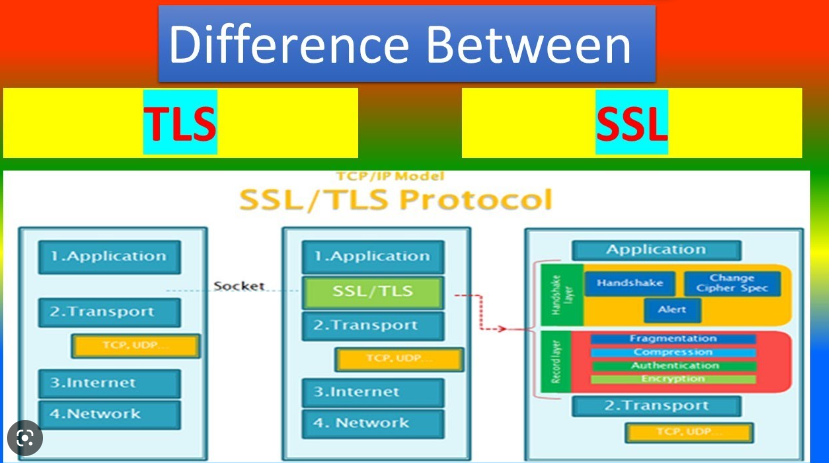In the ever-evolving landscape of cyber security, few transitions have had as profound an impact as the rebranding of SSL (Secure Sockets Layer) to TLS (Transport Layer Security). This change not only reflects a technological advancement but also invites deeper contemplation from a Christian perspective. This article embarks on an examination of why this rebranding occurred, what transformations transpired, and the implications it holds for believers navigating the digital realm.
The initial development of SSL in the 1990s marked a significant milestone in securing internet communications. Developed by Netscape, SSL provided a layer of protection for transmitting sensitive information, such as credit card numbers and personal data, across the burgeoning World Wide Web. As the demand for safer online interactions grew, SSL rapidly became the standard. Yet, as with many pioneering technologies, limitations became apparent. Security vulnerabilities began emerging, prompting the necessity for a more robust solution.
In 1999, the Internet Engineering Task Force (IETF) took the initiative to address the inadequacies of SSL. Thus, the first version of TLS was introduced, marking a pivotal shift from SSL. The acrimonious nature of the transition can be attributed to the entrenchment of SSL’s presence in the digital identity of internet communications. The renaming to TLS does not merely signify a semantic change but encapsulates profound enhancements in security protocol. For believers, this transition can serve as an allegory for unwavering faith amidst shifting paradigms.
One fundamental change in the TLS protocol was the introduction of improved encryption algorithms. While SSL offered a framework, it had vulnerabilities that attackers could exploit. TLS built upon the foundation of SSL but introduced more sophisticated encryption techniques that thwarted potential breaches. Within a Christian context, this can be likened to the Biblical notion of being ‘made new.’ Just as believers are called to renew their minds and embark on a transformative journey, TLS illustrates the continuous adaptation required to meet the evolving challenges of a perilous digital domain.
Moreover, TLS implemented more robust authentication mechanisms. With SSL, users might encounter man-in-the-middle attacks wherein an attacker could intercept and forge communications. TLS significantly mitigated this risk through enhanced certificate verification processes. In paralleling this to the Christian doctrine of discernment, one perceives the importance of recognizing the genuine amid a world filled with duplicity. Just as believers are urged to test the spirits and ensure their faith aligns with divine truth, TLS encourages validation of digital identities, preserving the sanctity of communication.
Another substantial enhancement arising from TLS was its focus on improving overall protocol structure. While SSL employed a complex layering that, at times, caused inefficiencies, TLS streamlined the process to enhance performance and reliability. This refinement can evoke reflections on communal worship and fellowship among Christians, where the objective is to build a more efficient, interconnected community centered on Christ. In this light, TLS can symbolize the Christian call towards unity and harmony in the body of believers, promoting a more enduring and adaptive faith expression in an increasingly polarized society.
The adoption of TLS over SSL is an act of alignment with a progressive understanding of cybersecurity. Believers are called to remain vigilant and adaptive, recognizing the importance of investing in resilience and faithfulness amidst external pressures and temptation. Just as TLS now serves as the gold standard for securing data transmissions, so too does the modern Christian must uphold the moral standards in their digital interactions.
Transitioning from SSL to TLS did not occur in isolation; it emerged from converging technological innovations and growing cyber threats. In much the same way, Christians can reflect on the power and need for constant vigilance in their spiritual walk. Maintaining integrity in the digital landscape can serve as a metaphor for one’s broader ethical and spiritual posture. Prepare and safeguard your integrity, much like TLS does for online communication—this is a compelling reminder that our virtual actions are equally significant as our terrestrial behaviors.
The ramifications of using TLS instead of SSL extend into the realm of personal responsibility and stewardship. As Christians engage with technology, there is an inherent call to prioritize the responsible handling of personal and communal data to uphold trust. The maturity embodied within the TLS protocol reflects a commitment not just to security, but to the ethical use of technology. This call to accountability resonates with the Christian narrative of stewardship—valuing and protecting what has been entrusted to us for the greater good.
Furthermore, the transition from SSL to TLS can catalyze curiosity regarding the uncharted realms of digital theology. As technology advances, believers are invited to explore how faith intersects with the cyber realm. Just as TLS stands guard over our information, Christians are prompted to stand steadfast in their beliefs, advocating for ethics and morality in the fast-paced digital era. The inquiry lies ahead: How do we cultivate a foundation of faith that equally respects the advancements in technology? Can the teachings within Christian doctrine provide a blueprint for navigating potential pitfalls in the digital space?
Ultimately, the evolution from SSL to TLS is emblematic of a journey towards greater authenticity, resilience, and moral responsibility. Within this digital renaissance, there stands an invitation—an appeal to both understand and actively participate in the transformative changes that shape our interactions in a world that grows increasingly intricate. By contemplating the implications of TLS through a Christian lens, one arrives at a deeper appreciation of how faith can guide and inform our responses to the challenges that the digital age presents.








Leave a Comment